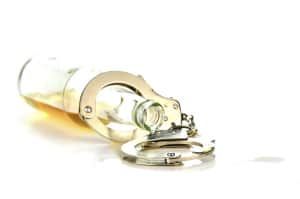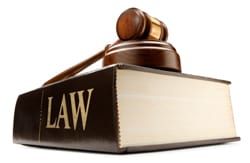 States in the U.S. are constantly working toward reducing drunk driving by improving current drunk driving laws. But when did states first start combating drunk driving? What’s the history of DUI laws in the U.S.? You might think that DUI laws popped up at the same time as the motor vehicle, but it actually took years for states to set laws to regulate driving. Although cars were being mass produced by 1900, the first DUI law didn’t exist until 10 years later.
States in the U.S. are constantly working toward reducing drunk driving by improving current drunk driving laws. But when did states first start combating drunk driving? What’s the history of DUI laws in the U.S.? You might think that DUI laws popped up at the same time as the motor vehicle, but it actually took years for states to set laws to regulate driving. Although cars were being mass produced by 1900, the first DUI law didn’t exist until 10 years later.
According to LiquorLaws.net, New York was the first state to enact a law prohibiting drivers from driving while impaired in 1910. California was second and the rest of the states soon followed suit. While there was no set definition of what level of intoxication qualified as drunk driving, there was a way to find out if a driver was under the influence of alcohol by the early 1930s.
In 1936, Dr. Harger, professor of toxicology and biochemistry at Indiana University, patented the Drunkometer. This first balloon-like breathalyzer device required people to breathe into it just like today’s breathalyzer devices. If the air changed color when mixed with a chemical solution, that meant alcohol was present.
There was still no set blood alcohol content (BAC) limit until 1939 when Indiana passed the first BAC law, which set the legal DUI limit to 0.15.  That’s almost twice today’s limit of 0.08! The limit of 0.15 was chosen after the American Medical Association (AMA) and the National Safety Council (NSC) determined that a driver with a BAC of 0.15 was definitely too impaired to drive. Though it took over a decade, former police captain and university professor Robert Borkenstein eventually invented the first form of the breathalyzer used today. This device not only determined whether or not drivers were impaired but if they were over the legal limit.
That’s almost twice today’s limit of 0.08! The limit of 0.15 was chosen after the American Medical Association (AMA) and the National Safety Council (NSC) determined that a driver with a BAC of 0.15 was definitely too impaired to drive. Though it took over a decade, former police captain and university professor Robert Borkenstein eventually invented the first form of the breathalyzer used today. This device not only determined whether or not drivers were impaired but if they were over the legal limit.
At this point, drivers knew that drinking and driving was illegal, but they didn’t know how dangerous it was. Mothers Against Drunk Driving (MADD) began to raise awareness of the dangers of drunk driving in 1980. By 1984, they had influenced Congress to set the legal drinking age to 21, and by 2000, the nonprofit organization influenced Congress to set the legal BAC limit for DUI to 0.08.
The latest trend in state DUI laws is to require ignition interlocks for convicted drunk drivers. As of 2012, every state in the U.S. has some sort of ignition interlock law. And as of 2014, almost half of all U.S. states require interlocks for all convicted drunk drivers.
